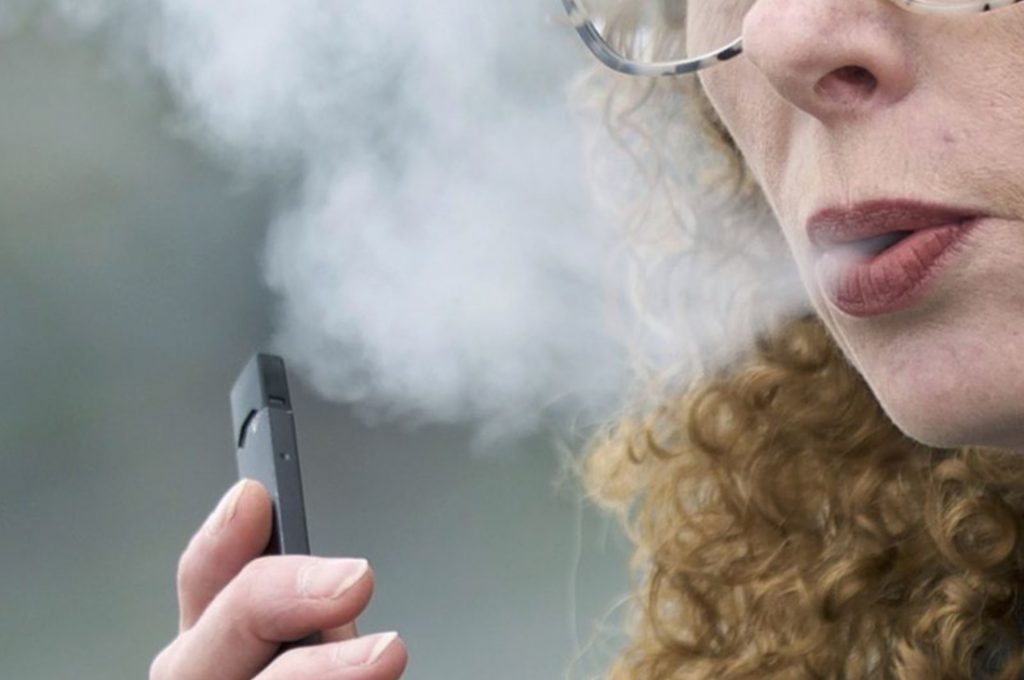Pushing Vapers back to cigarettes?

A dangerous new provision in federal law
By Trevor Burrus New York Daily News | Dec 31, 2020
On about page 5,000 of the 5,500-page federal COVID relief law is a hidden and largelyundiscussed section that could push thousands of vapers back to traditional cigarette smoking. I know, because I’m one of them. The new restrictions on vaping equipment and supplies, inparticular the ban on mailing them, will force me and thousands of others to look forsubstitutes to the products we prefer. In many instances, we will return to dangerous combustible cigarettes.
Title VI of the COVID relief bill was first introduced to Congress in April as the Preventing Online Sales of E-Cigarettes to Children Act. The bill redefines the term “cigarette” to include all types of vaping devices and accessories, even those that do not contain nicotine. Yes, under the new law, a CBD vaping device — a non-psychoactive chemical in marijuana — is now considered an “electronic nicotine delivery system” because it is “any electronic device that, through an aerosolized solution, delivers nicotine, avor, or any other substance to the user inhaling from the device.” Moreover, even a bottle of CBD vaping liquid is now a “cigarette” because the denition includes “any component, liquid, part, or accessory” of a vaping system.
The bill then requires the U.S. Postal Service to clarify, within 120 days, that the general prohibition on shipping cigarettes now applies to all the newly deemed “cigarettes.” This heavy-handed approach to keeping e-cigarettes and other vaping devices out of the hands
of children is certain to backre against responsible adults who use e-cigarettes to mitigate the harm that nicotine addiction can cause.
I am chemically addicted to nicotine, and I got that way through cigarettes. I wish I weren’t addicted, but there’s no button I can press to make it disappear. About seven years ago, I began vaping to supplement and replace some cigarettes. After about four years, I finally found a flavor and a vaporizer I enjoyed enough to mostly replace cigarettes.
Then, one day, I realized I hadn’t smoked a cigarette in months. That wasn’t the plan; it just happened. I liked my vape, and I suddenly didn’t like cigarettes and all the bad things that came with them. But my preferred avor and device comes from a mail order-only company,
and under the new law, they will likely be unavailable in a few months.
My story is not unique. Thousands if not millions of ex-smokers have a similar tale. The wide variety of vape avors and vaping devices have allowed smokers to search for the one that tastes the best and works for them. If they find the right one, they can ditch smoking entirely.
The new law will make many ex-smoker vapers have to nd a new vaping system that will accommodate their needs.
Many people argue that such consequences are the inevitable result of the estimable and crucial goal of keeping children and teenagers from vaping. That danger, however, is overblown. According to a recent study from NYU, the vast majority of teenage vapers are also users of combustible tobacco products. As the authors write, “while there has been fear that e-cigarettes are introducing nicotine to many young people who otherwise would not have smoked, the data show otherwise — only a small proportion of tobacco-naïve youth report vaping.”
While the rate of youth vaping increased from 2017-2018, most of that increase was from infrequent users: “while 13.8% of students had vaped in the past 30 days, more than half of them vaped ve days or fewer.” Moreover, all this has occurred while teen smoking rates are at an all-time low, a phenomenon that is almost assuredly connected to teens using vaping as a replacement for combustible cigarettes.
But anti-vaping public health ofcials prefer to demonize e-cigarettes rather than treat them as a net gain for public health. Yes, it would be better for me to not vape at all, but I rst decided to mitigate the harms caused by smoking combustible cigarettes.
Rather than championing the benets of vaping, anti-vapers have leaned hard on the precautionary principle (“we don’t know the long-term effects”) and downplayed the many studies that show vaping to be much safer than smoking. For example, in 2018, the British public health service wrote: “Vaping poses only a small fraction of the risks of smoking, and switching completely from smoking to vaping conveys substantial health benets over continued smoking.”
Nevertheless, on this side of the pond, we continue to impose ineffective and harmful restrictions on vaping. We’ll see more smokers as a result. Public health, which is supposed to be something we all care about a great deal these days, will suffer.
Originally Published: https://www.nydailynews.com/opinion/ny-oped-pushing-vapers-back-to-cigarettes-20201231-dv36cbnbfbaw5bmipiruygmv6a-story.html
Reproduced to bypass GDPR Issues



